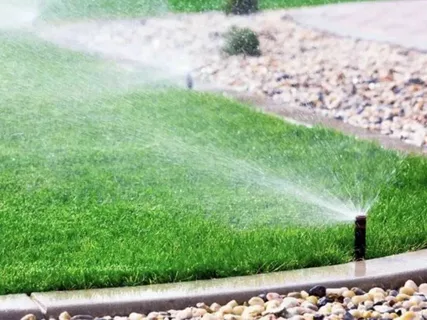When you drive through Lebanon, Ohio in spring, the first thing you notice is how different every lawn looks — some bursting with life, others patchy or pale. The secret to a healthy, consistent lawn isn’t luck or expensive fertilizer. It’s balance — a harmony between soil health, sunlight, and steady care through the seasons.
Understanding the Ground Beneath Your Feet
Most lawns in Warren County share the same challenge: heavy, clay-based soil. This type of soil holds nutrients well but struggles with drainage. After a few days of rain, water pools in low areas and suffocates roots. In dry weeks, the same soil hardens like brick and resists moisture.
A professional soil test is a game-changer — it tells you the exact pH and nutrient levels your lawn needs. Many homeowners in Lebanon find their soil is slightly acidic and needs lime to balance. Once that base layer is healthy, everything else — grass, trees, even flowerbeds — responds better.
That’s why local experts often pair grading and drainage improvements with soil conditioning as part of a larger landscape service package. You can’t grow green grass on compacted earth — the foundation matters first.
Timing Your Lawn Care for Ohio’s Seasons
Lebanon’s mix of warm summers and cold winters means your lawn lives in constant transition. Here’s how to work with the rhythm of the local climate:
- Spring (March–May): Aerate and overseed early. This opens compacted soil and allows new grass to establish before summer heat sets in.
- Summer (June–August): Mow high — at least 3 inches — to shade roots and preserve moisture. Avoid cutting more than one-third of the blade at once.
- Fall (September–November): Feed your lawn. Late-season fertilization helps roots grow deep and store nutrients for winter.
- Winter (December–February): Stay off frozen grass. The blades can snap and cause bare patches come spring.
A consistent schedule turns lawn care from a chore into a rhythm. It’s not about doing more — it’s about doing the right things at the right times.
The Role of Sunlight and Shade
In older neighborhoods like downtown Lebanon, mature trees can create shaded zones where grass thins out. Instead of fighting the shade, consider using it. Shade-tolerant grasses or ground covers such as creeping Jenny or mondo grass fill those areas beautifully.
Adding hardscape features — like stone paths or seating nooks — transforms problem spots into purposeful design. This mix of form and function is where a custom landscape design truly shines, blending beauty with practicality.
Building a Lawn That Lasts
A great lawn isn’t just green — it’s strong. It drains well, resists drought, and recovers quickly after storms. The difference comes from groundwork: healthy soil, proper grading, and plant choices tailored to your property.
In Lebanon, every yard tells its own story. Some start as neglected lots, others as overgrown slopes. But with balance, patience, and professional guidance, any lawn can become the kind of landscape that makes neighbors slow down as they drive by.
Bottom Line:
If you want your lawn to thrive through Ohio’s unpredictable weather, think beyond the surface. Healthy grass starts with healthy soil — and the best time to begin is before the next rainstorm.


